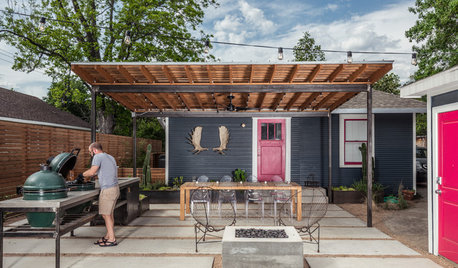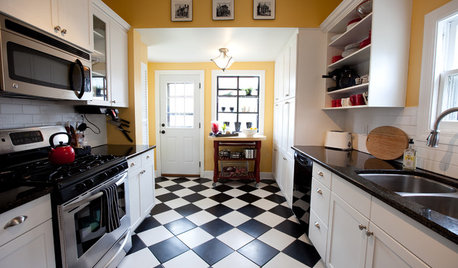Can you comment on my custom mix please?
john_hammer
9 years ago
Related Stories

TILEMoor Tile, Please!
Add an exotic touch with Moroccan tiles in everything from intricate patterns and rich colors to subtle, luminous neutrals
Full Story
DECORATING GUIDESPlease Touch: Texture Makes Rooms Spring to Life
Great design stimulates all the senses, including touch. Check out these great uses of texture, then let your fingers do the walking
Full Story
HOME OFFICESQuiet, Please! How to Cut Noise Pollution at Home
Leaf blowers, trucks or noisy neighbors driving you berserk? These sound-reduction strategies can help you hush things up
Full Story
OUTDOOR KITCHENSHouzz Call: Please Show Us Your Grill Setup
Gas or charcoal? Front and center or out of the way? We want to see how you barbecue at home
Full Story
SUMMER GARDENINGHouzz Call: Please Show Us Your Summer Garden!
Share pictures of your home and yard this summer — we’d love to feature them in an upcoming story
Full Story
GARDENING GUIDESGreat Design Plant: Snowberry Pleases Year-Round
Bright spring foliage, pretty summer flowers, white berries in winter ... Symphoricarpos albus is a sight to behold in every season
Full Story
DECORATING GUIDES10 Bedroom Design Ideas to Please Him and Her
Blend colors and styles to create a harmonious sanctuary for two, using these examples and tips
Full Story
FLOORSChecks, Please! 13 Choices for Checkered Floors
Checkerboard Patterns Go From Casual to Ritzy, From Marble to Grass
Full Story
FURNITUREWhy It's OK to Hate Your New Custom Sofa
It takes time to get used to bold new furniture, but dry your tears — the shock can be good for you. Here's what to expect
Full Story






rhizo_1 (North AL) zone 7
john_hammerOriginal Author
Related Professionals
Carson Landscape Architects & Landscape Designers · Tempe Landscape Contractors · Surprise Landscape Contractors · Beverly Hills Landscape Contractors · Camp Verde Landscape Contractors · Chattanooga Landscape Contractors · East Patchogue Landscape Contractors · El Segundo Landscape Contractors · Gainesville Landscape Contractors · Lynwood Landscape Contractors · Mahwah Landscape Contractors · Mission Landscape Contractors · Wallingford Landscape Contractors · Fort Collins Decks, Patios & Outdoor Enclosures · Highland Springs Decks, Patios & Outdoor Enclosuresjohn_hammerOriginal Author
rhizo_1 (North AL) zone 7
john_hammerOriginal Author
toxcrusadr
mad_gallica (z5 Eastern NY)
john_hammerOriginal Author
mad_gallica (z5 Eastern NY)
rhizo_1 (North AL) zone 7
gardengal48 (PNW Z8/9)
john_hammerOriginal Author
toxcrusadr
mad_gallica (z5 Eastern NY)
john_hammerOriginal Author
mad_gallica (z5 Eastern NY)
john_hammerOriginal Author
john_hammerOriginal Author
john_hammerOriginal Author